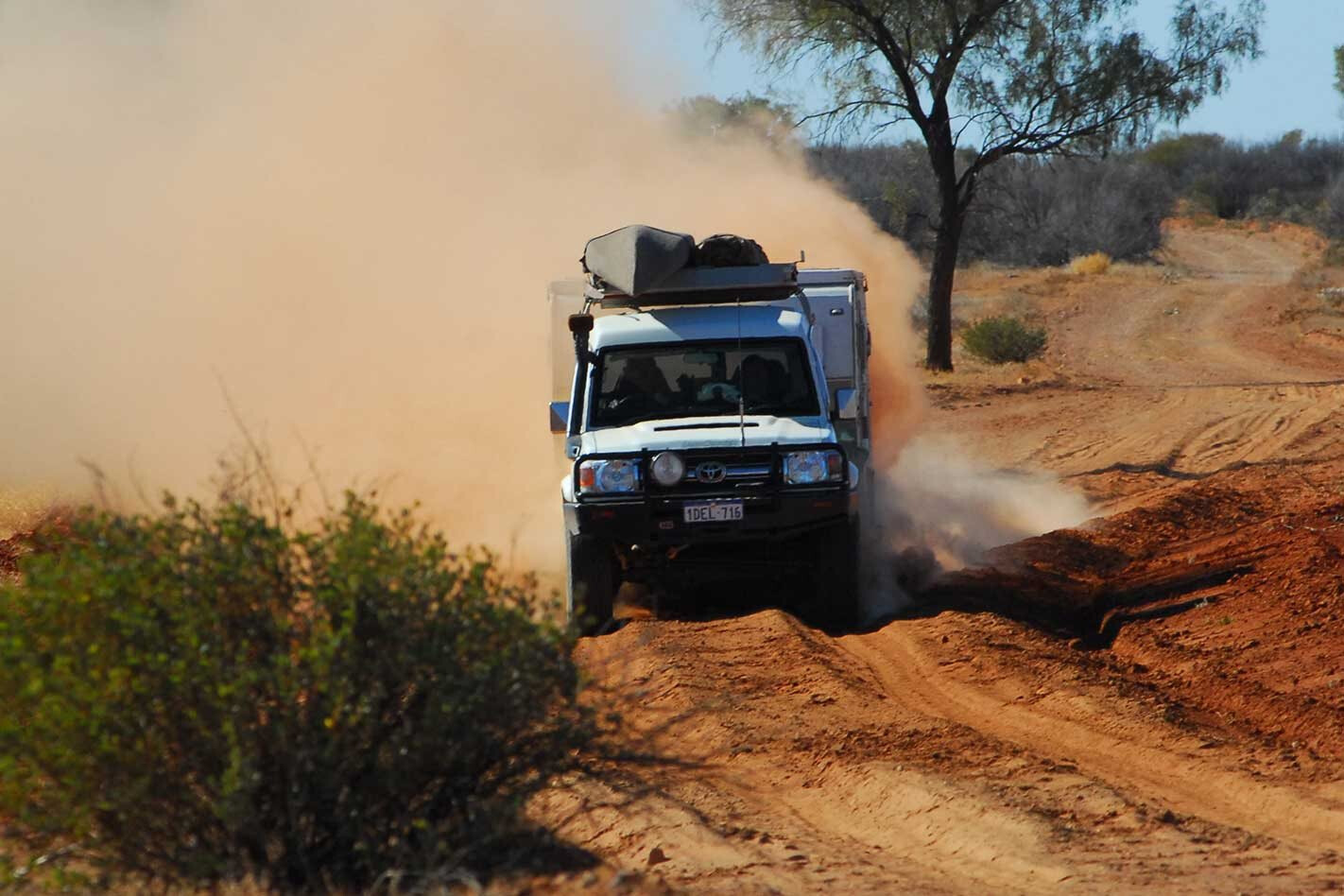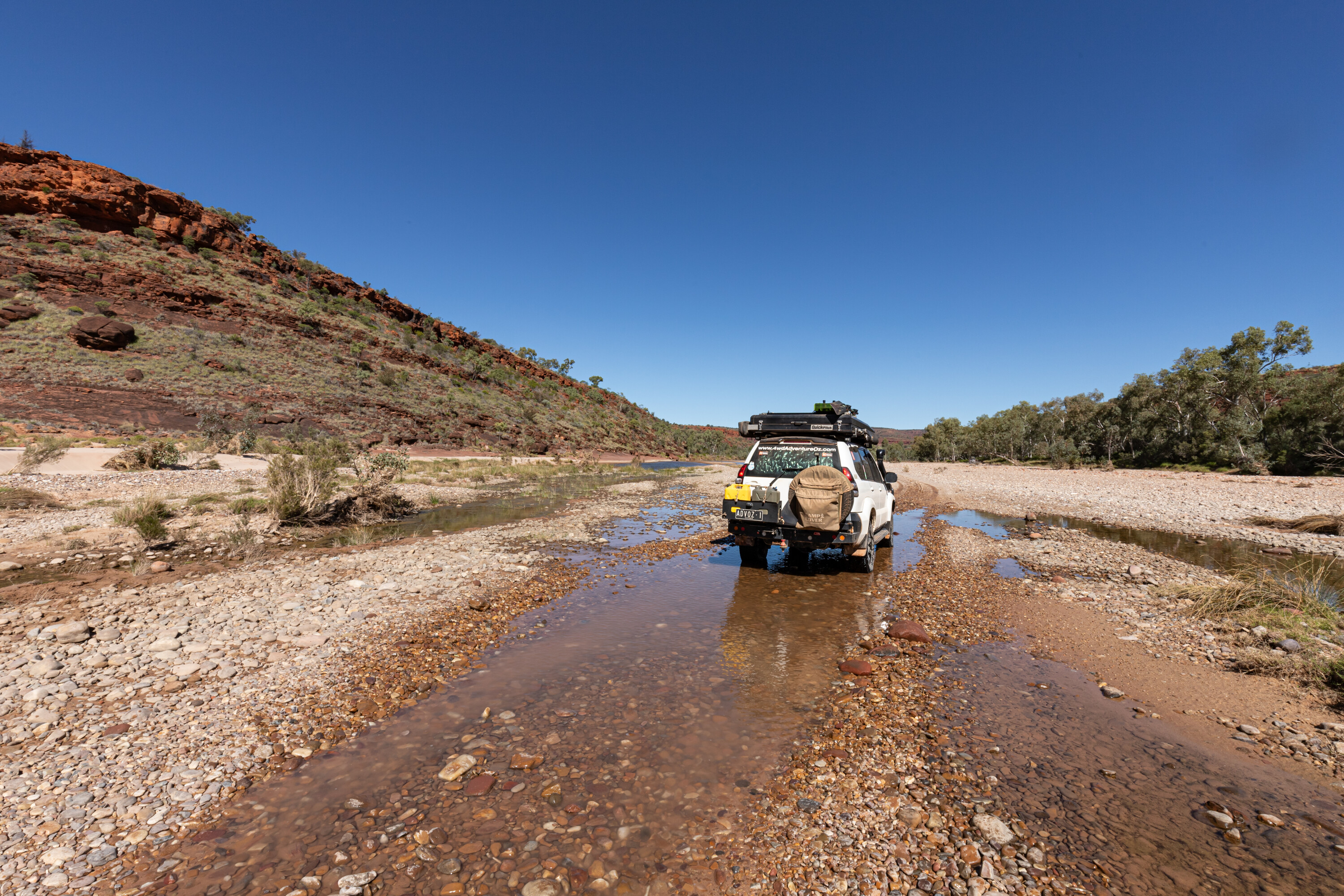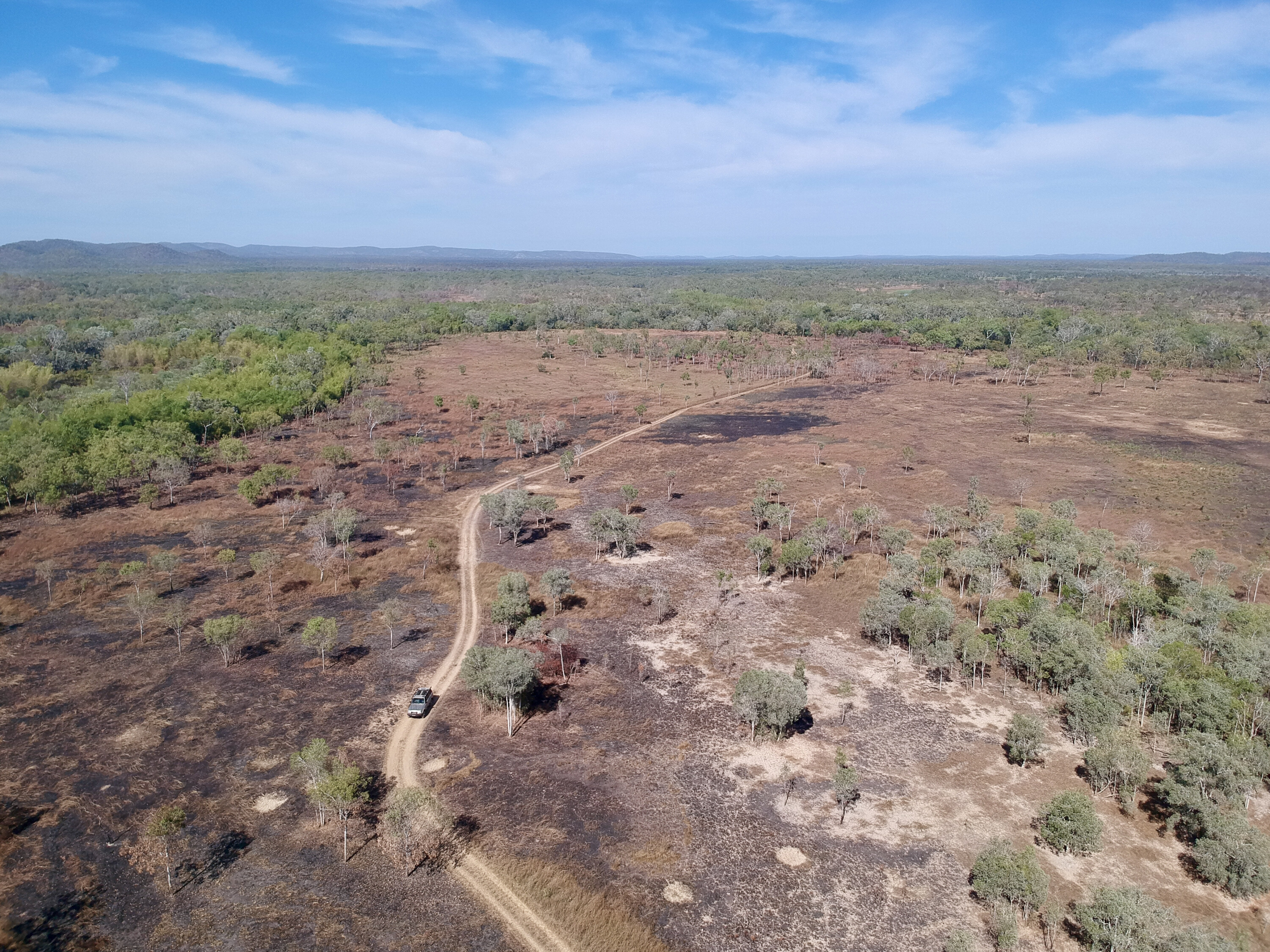We were stymied! We were looking to get to the Boxhole Meteorite Crater, but we only had a rough idea of where it was, what it looked like and how big it was supposed to be … and there was nobody at the station homestead to ask or get permission to visit it.
The crater, by all accounts, is not far from the Dnieper Station homestead, about 40km north of the Plenty Highway along what is part of the Binns Track. It was discovered by a shearer who took the acclaimed geologist and explorer, Cecil Madigan, to it in 1937. Madigan, after finding nickel and iron fragments, confirmed that it was a meteorite crater – and a young one at that.
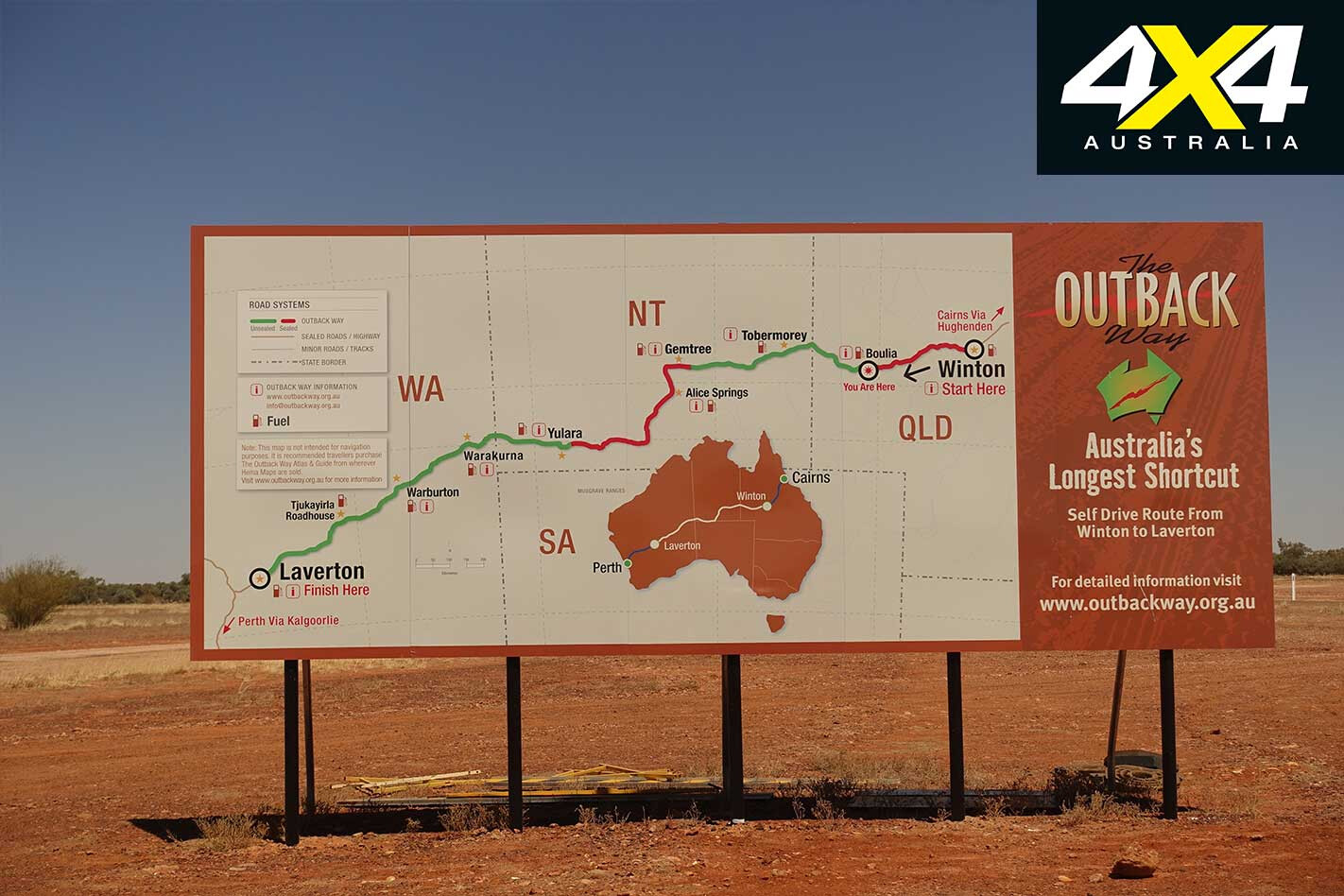
Later, a mass of iron mixed with other meteorite minerals weighing more than 80kg was discovered; sadly that sample of high-speed intergalactic rock is in the British Natural History Museum, far from where it can be enjoyed by Aussie travellers.
At 170 metres in diameter the crater isn’t huge, but it is one of the youngest in Australia at around 5500 years old and I expected to find, somewhere, Aboriginal stories or legends pertaining to its spectacular, fiery formation, but such was not the case. In fact, that very absence of stories about this crater, when other older ones have rich stories about them, still mystifies researches (check out: https://bit.ly/2VYbaaS).
Disappointed, we turned away from the homestead and headed deeper into more remote country, our travels along the Plenty Highway having started a few days previously when we had arrived in the outback town of Boulia, an oasis I always enjoy visiting for one reason or another.
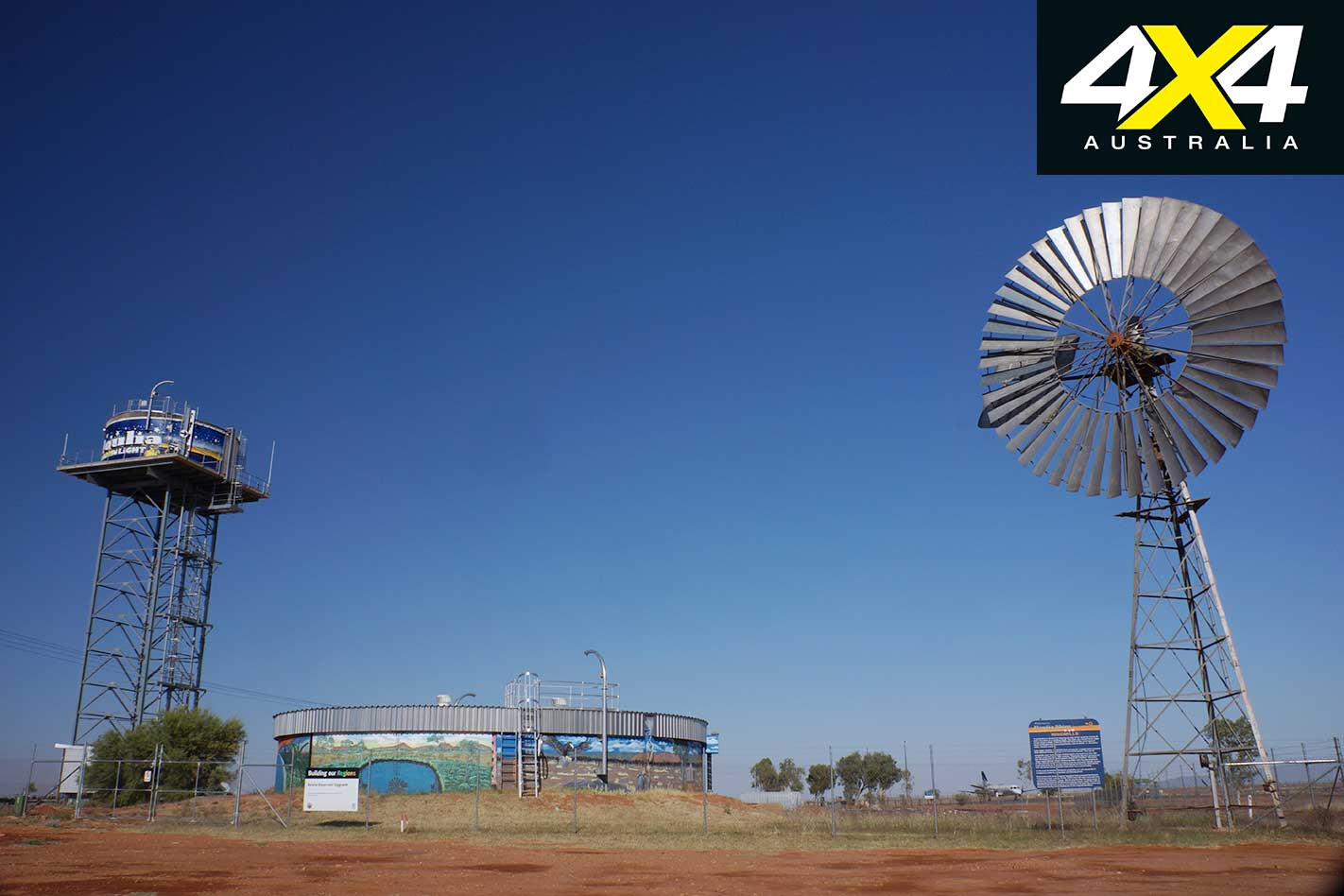
The town located on the banks of the Burke River was officially founded in 1879. Earlier, Burke and Wills had passed through here on their march to the Gulf and their stagger back to their camp on the Cooper in 1861/62. Pioneer graziers came out this way in 1877 taking up land along the great rivers, but already there was a native mounted police post located on the Burke River some 25km north of the soon-to-be proclaimed town of Boulia, the town taking its name from the local waterhole.
This latest visit we parked the camper in the local van park and went off to experience the town, including the Min Min Centre, which celebrates the area’s Min Min Lights, which were first reported at an isolated Cobb & Co staging post back in the 1880s. Myth or legend, true or false? Nobody is betting one way or another, but nobody can explain them either, although I know we haven’t seen any!
Then, for a dose of history, there is the well set-up heritage complex centred around ‘the Stonehouse’ built in the late 1880s. Being a bit of a dinosaur nut we checked out the very well preserved plesiosaur fossil found here, which is one of the most complete and fine examples ever discovered.
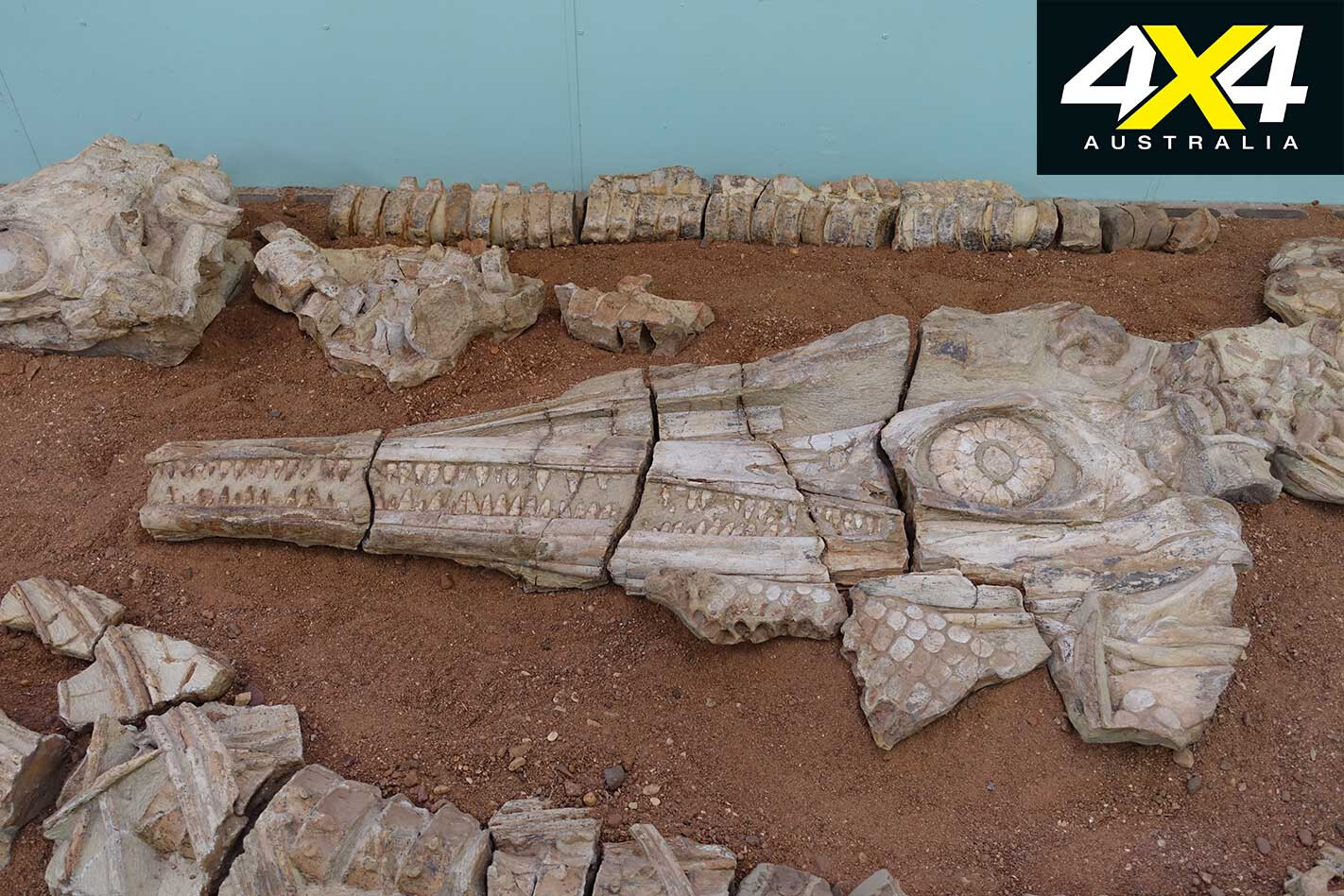
Next morning we headed out of town along the tar of the Diamantina Developmental Road before turning onto the Donohue Highway and striking more directly west. The blacktop continued for some way before degenerating into gravel interspersed with short sections of blacktop. After about 125km the road crosses the braided channels of the Georgina River and there is a free camping site located here that is often popular with travellers.
The Georgina is one of the three great rivers of outback Queensland and the Channel Country, and it’s the most western one. It begins gathering water farther north on the Barkly Tableland near Camooweal, and its catchment of 230,000km² even includes the northern slopes of the MacDonnell Ranges. It meets with the Burke River just south of Boulia before flowing south to form Eyre Creek, and, ultimately, in times of big floods, making its way to Lake Eyre.
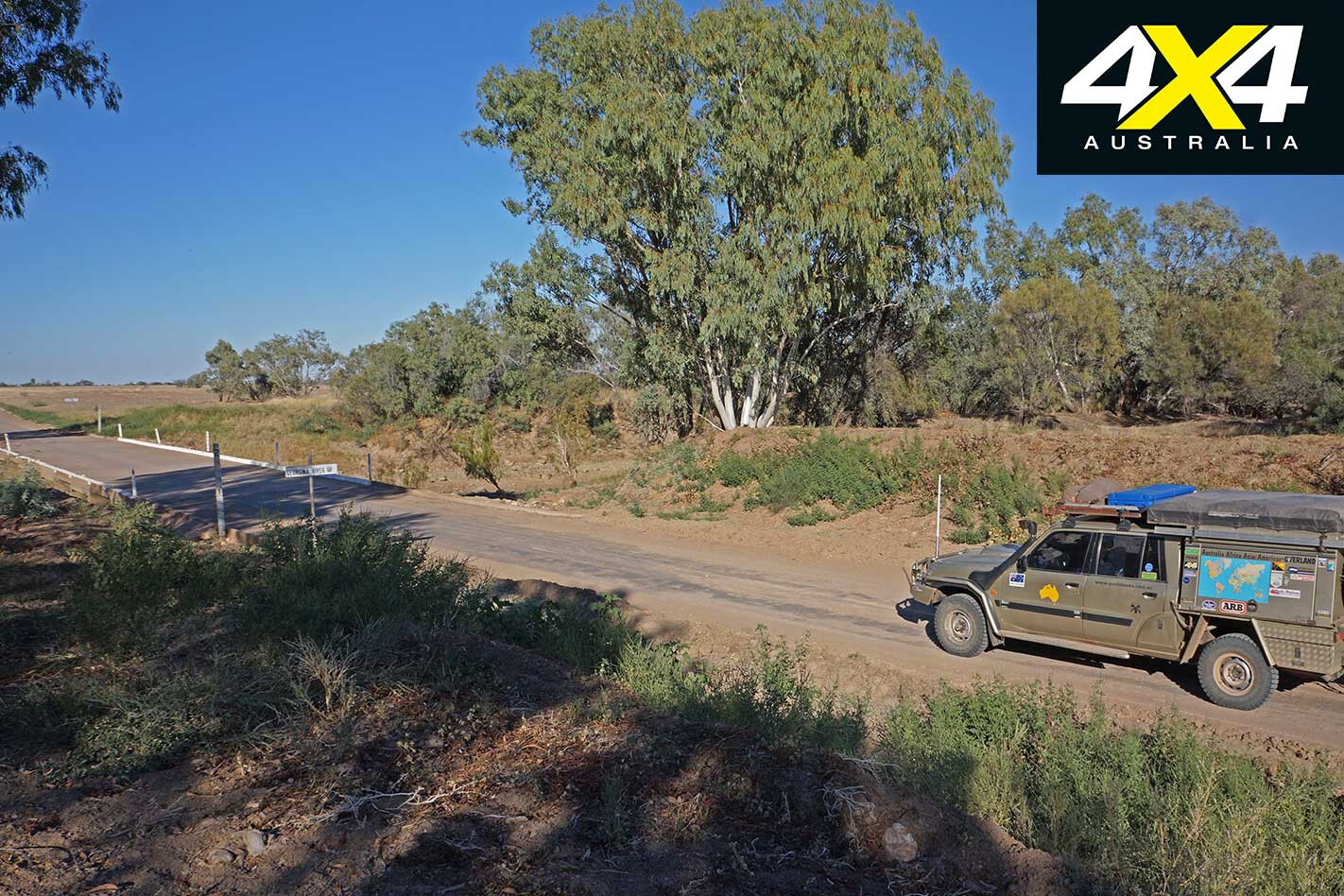
On the west side of the river is a marked white post showing the record flood levels at this point over the past 80 years. 1974 was the great year of the ‘Green Centre’ when Lake Eyre filled for the only time in European history, while the river was up to 30km wide in places. Can you imagine that much water?
At times like that nobody moves by road. In fact, even after just a shower of rain the roads and tracks crossing these black soil plains quickly become impassable, so it pays to keep a check on the road conditions and obey any road-closed signs.
Glenormiston Station, which takes in much of the surrounding country, covers nearly 700,000ha (1.7 million acres), 159,000ha of which is a self-proclaimed nature reserve, while running about 12,000 head of cattle in good seasons. But the country is having a hard time of late, with drought being far more common than rain and green grass.
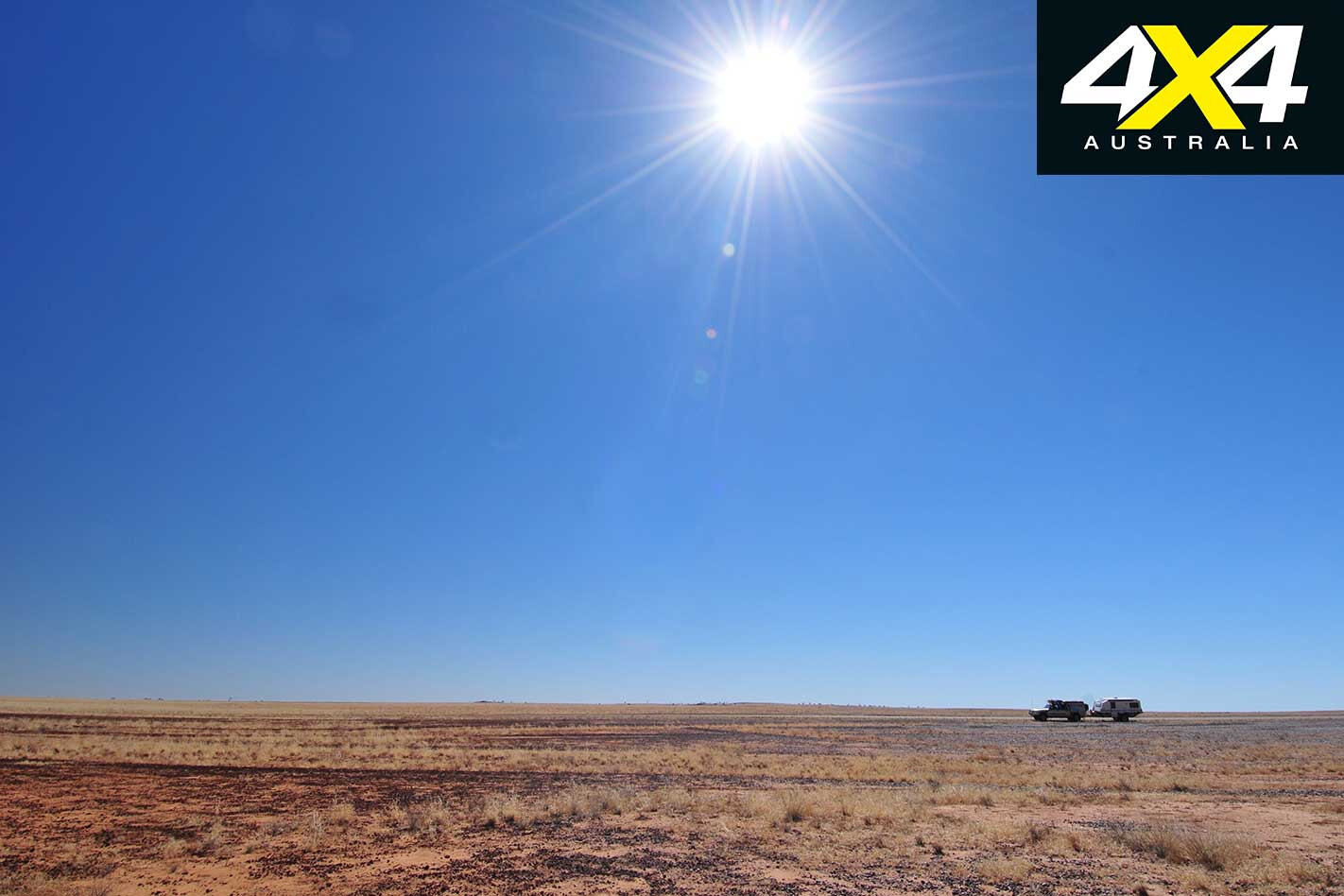
We had driven through here in 2014, the country then not looking too bad, with small flocks of budgies and cockatiels flitting this way and that, stately brolgas feeding across the drying grasslands and lots of wedge-tailed eagles feeding on any roadkill along the way.
As we headed west the road continued to be pretty good gravel, through flat Mitchell grass plains with man-made turkey-nest dams looking more like hills in this level expanse. As the route gets closer to the NT border the vast, seemingly endless grassy plains give way to patches of mulga scrub dotted with a few hills and breakaway country.
We crossed into NT and took the short diversion to Tobermorey homestead which offers basic supplies, fuel and tyre repairs, along with camping and accommodation. Like all the properties in this part of the world it is huge, covering nearly 600,000ha with its southern boundary, the Simpson Desert. When we were there dozens of zebra finches were enjoying the sprinkler and green grass of the camping area’s lawn.
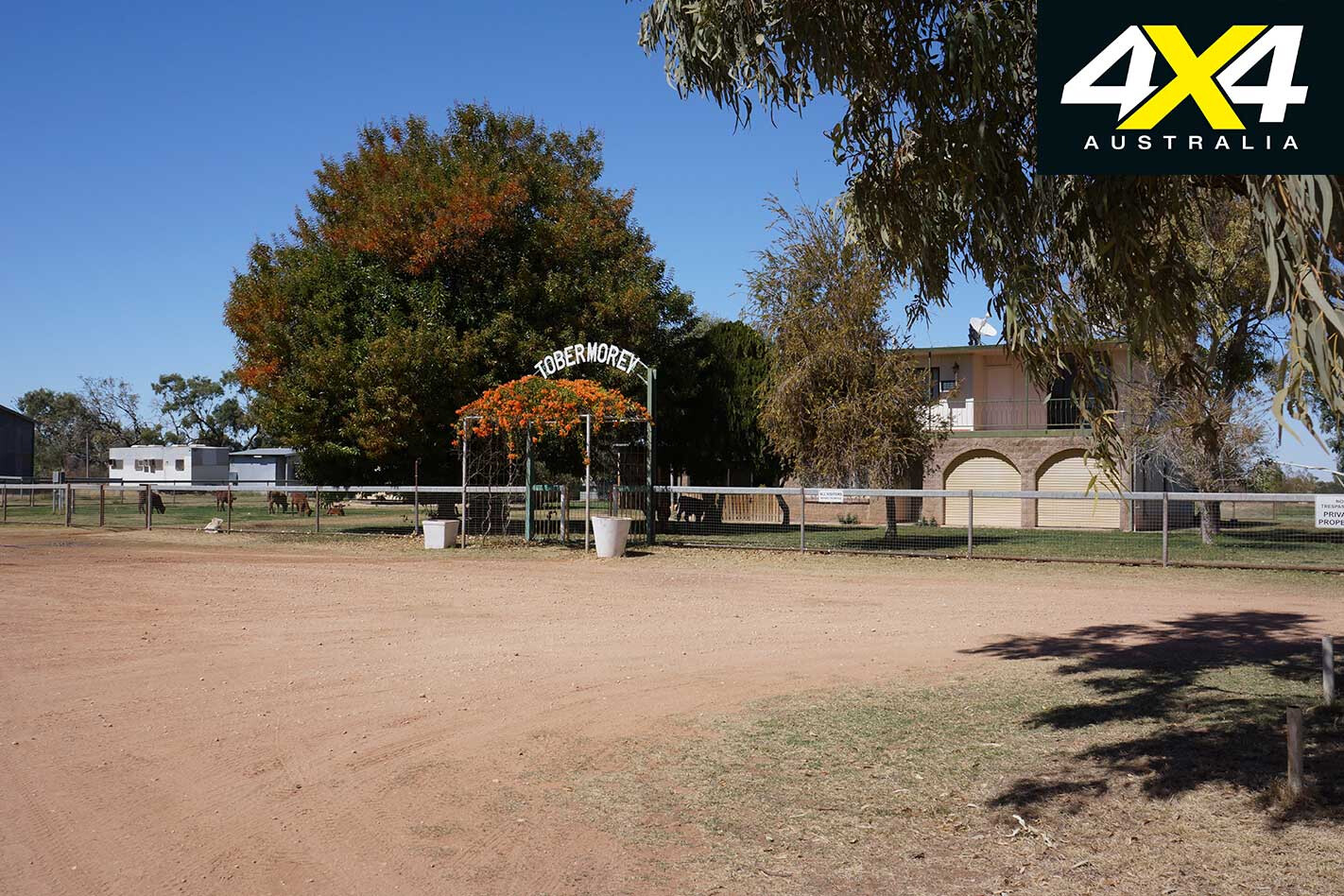
With a change of name at the border, the Plenty Highway took us westwards, the road continuing to be improved gravel. We passed Heartbreak Bore with the low smudge of the Umberumbera Hills to our south before passing the turnoff to Tarlton Downs Station and coming to the Arthur Creek crossing. We pulled up here for the evening, camping on the edge of the dry stream about 200 metres south of the road.
Many of the names of the creeks, rivers and prominent hills, west of the Queensland border, were bestowed upon them by the first European into the area, Henry Verce Barclay. Barclay explored much of the area north of the Harts Range in 1878 and named not only the Plenty River but also the Marshall and Hale Rivers, Arthur Creek, as well as Mt Riddoch and the Talton Range, among others.
Charles Winnecke (later famous for his leadership of the Horn Expedition) followed and pushed the edge of exploration farther north to the Sandover River, meeting up with the earlier explorations of Landsborough’s 1861-62 route in search of the doomed Burke and Wills party.
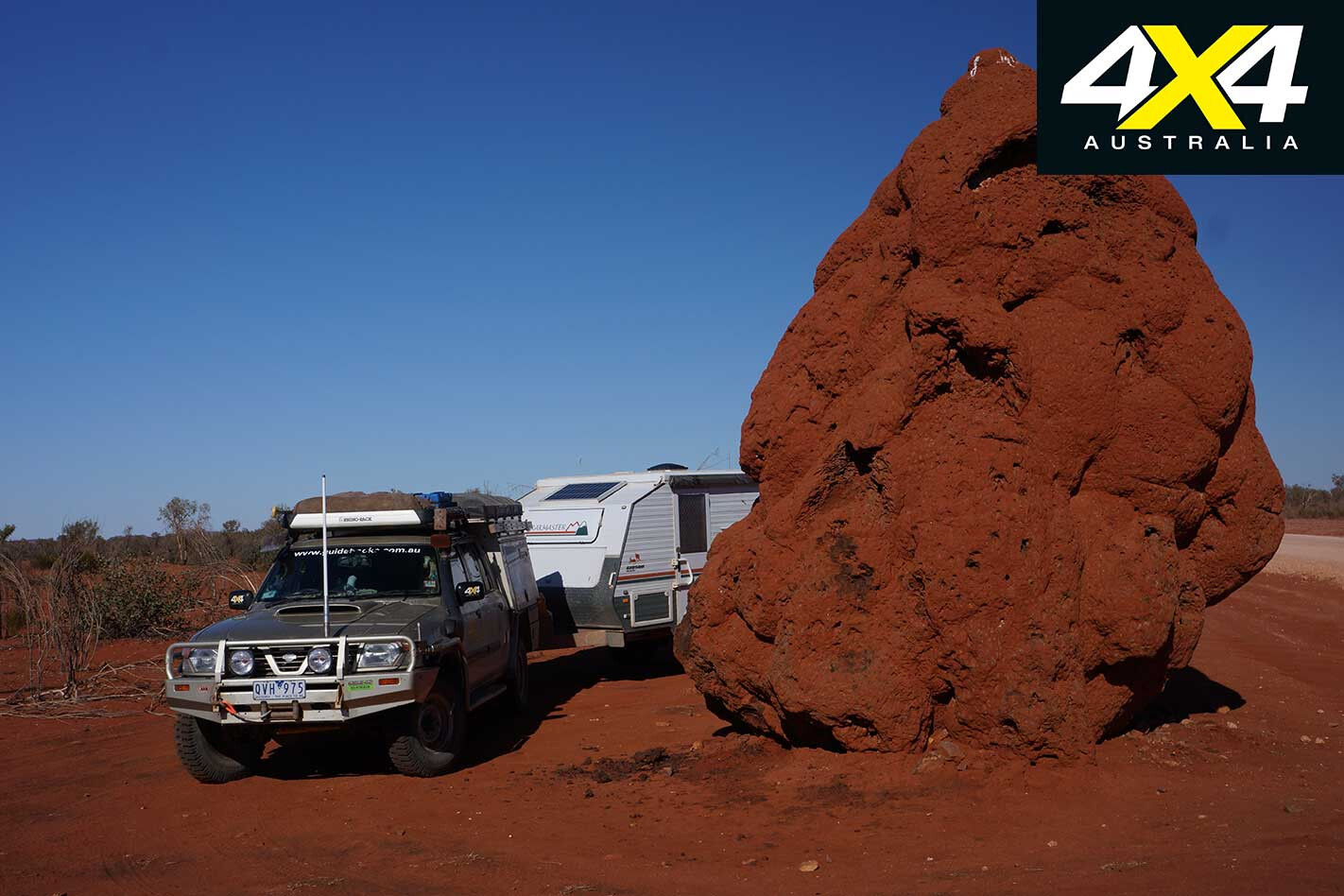
The Plenty Highway continued much the same as before as we crossed the dry Marshall River before arriving at the oasis of Jervois homestead which offers camping, a few basic supplies and fuel. Just south of the homestead is the access track to Batton Hills Camp (a great spot to spend a couple of days) and the Hay River Track which leads south into the Simpson Desert, joining the main east-west route across the desert just north of Poeppel Corner and about 150km west of Birdsville.
Another 105km west on the Plenty we met with the Binns Track heading north, so we turned that way for our unsuccessful search for the Boxhole Crater. On previous trips we had headed for and explored the little known Dulcie Range NP, which is another 60km north-east of Dnieper Station.
The park offers no facilities but a very pleasant remote camping experience near the ruins of the old Huckitta homestead and a nearby small gorge where water can always be found. There’s some good birdlife here, and in the surrounding ranges a rich treasure trove of ancient Aboriginal rock art can be found after some diligent searching.

This time around though we headed to Tower Rock in the Mac & Rose Chambers Conservation Reserve, about 20km north of the Mt Swan homestead, where a small store can offer up some basic supplies and fuel.
We’ve been to the small camping area at Tower Rock (very basic facilities, so bring your own water and firewood) before and we enjoy the camping, the solitude and the striking rock formations that literarily glow in the light of the setting sun.
After settling in we wandered among the boulders in the cool of the evening, disturbing a few ’roos, while we climbed to the crest of the tallest rock tower. The next day we enjoyed the area and cooked a great camp-oven meal.
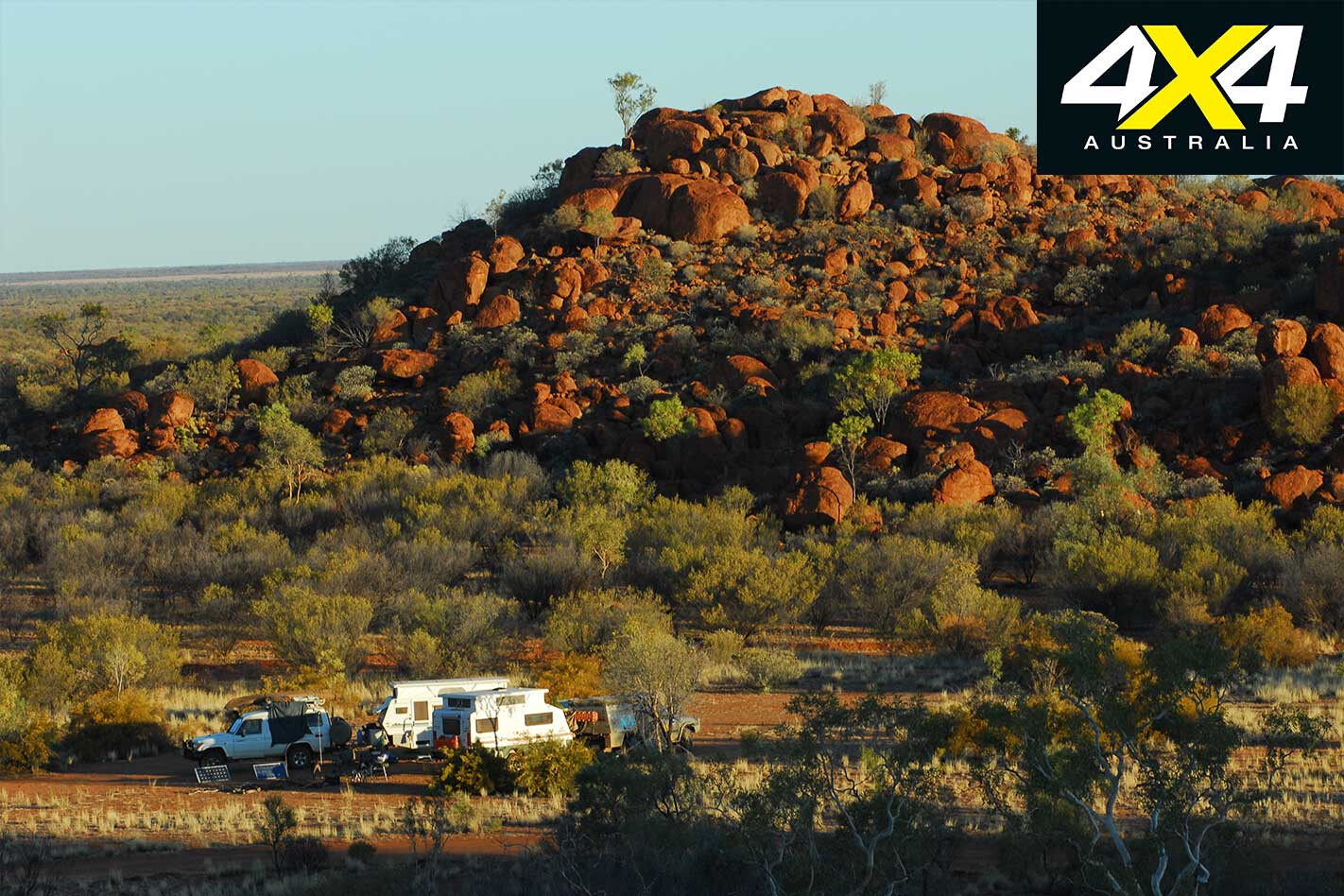
Back on the Plenty we continued our westward march, stopping at the Atitjere Community, often referred to as Harts Range, the nearby local police station still going by that moniker. The community, lying in the shadow of the rugged Harts Range, is now home to about 450 people and is most famous these days for its Harts Range Races weekend held on the first weekend in August each year (see: www.hartsrangeraces.org.au) that includes a rodeo, novelty events, a ball and, of course, the famous races.
Not far from the community one of the world’s biggest garnet mines came into production in 2016, adding yet another chapter to the area’s mining heritage which began in the 1890s. First it was mica that was mined and the area supplied nearly all of Australia’s mica needs until the 1960s, while earlier, during WWII, the Harts Range area supported the largest mica mine in the world.

The region is now also popular with fossickers looking for zircons and garnets in three recognised and designated areas south of the Plenty Highway that people can go to, bush camp and fossick for the stones. Remember, all fossicking in the Harts Range area requires a permit, which are available from the NT Department of Mines and Energy website, where you’ll also find maps and other info.
Continuing westward from Harts Range you come to the blacktop and then the turnoff onto the Pinnacles Road before arriving at the Gemtree Bush Resort. It’s a great spot to stop and one we never bypass.
The well-established resort, owned and run by fifth-generation Territorian, Kate, and her husband Aaron, are a wealth of information on the region, with Kate having been born and bred in the area with many of her family still owning cattle properties in the surrounding district. Gemtree offers supplies, meals, fuel, campsites (powered and unpowered), accommodation and evening meals – the roasts on a Wednesday and Saturday night are not to be missed).
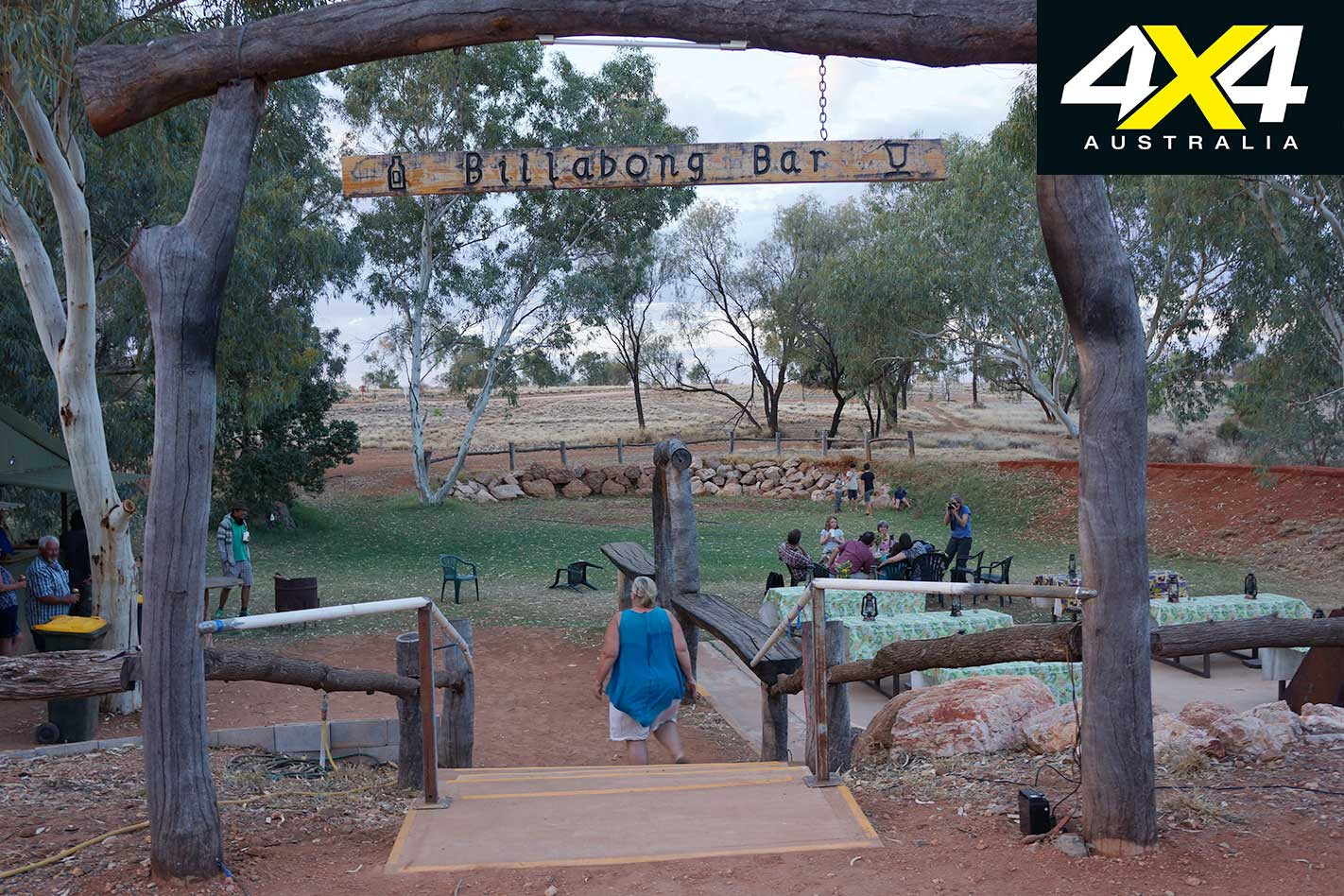
There are a host of things to do here, not the least of which are zircon and garnet fossicking tours (no permit required when on a tour), where a guide will give you the good oil on where to fossick, what to look for and whether the stone you have dug up is worth a fortune. Then you can take your prizes back to the park and have them cut and polished by the local expert.
From Gemtree it is just 135km, all on blacktop, to Alice Springs, but we prefer to backtrack the short distance to the Pinnacle Road and head south through the ranges to Arltunga, Ruby Gap and the eastern MacDonnells, before heading to Alice. That’s what we did this time around as well.
And that bloody Boxhole Meteorite Crater? It’s on the to-do list for our next Central Australia trip!
Travel Planner
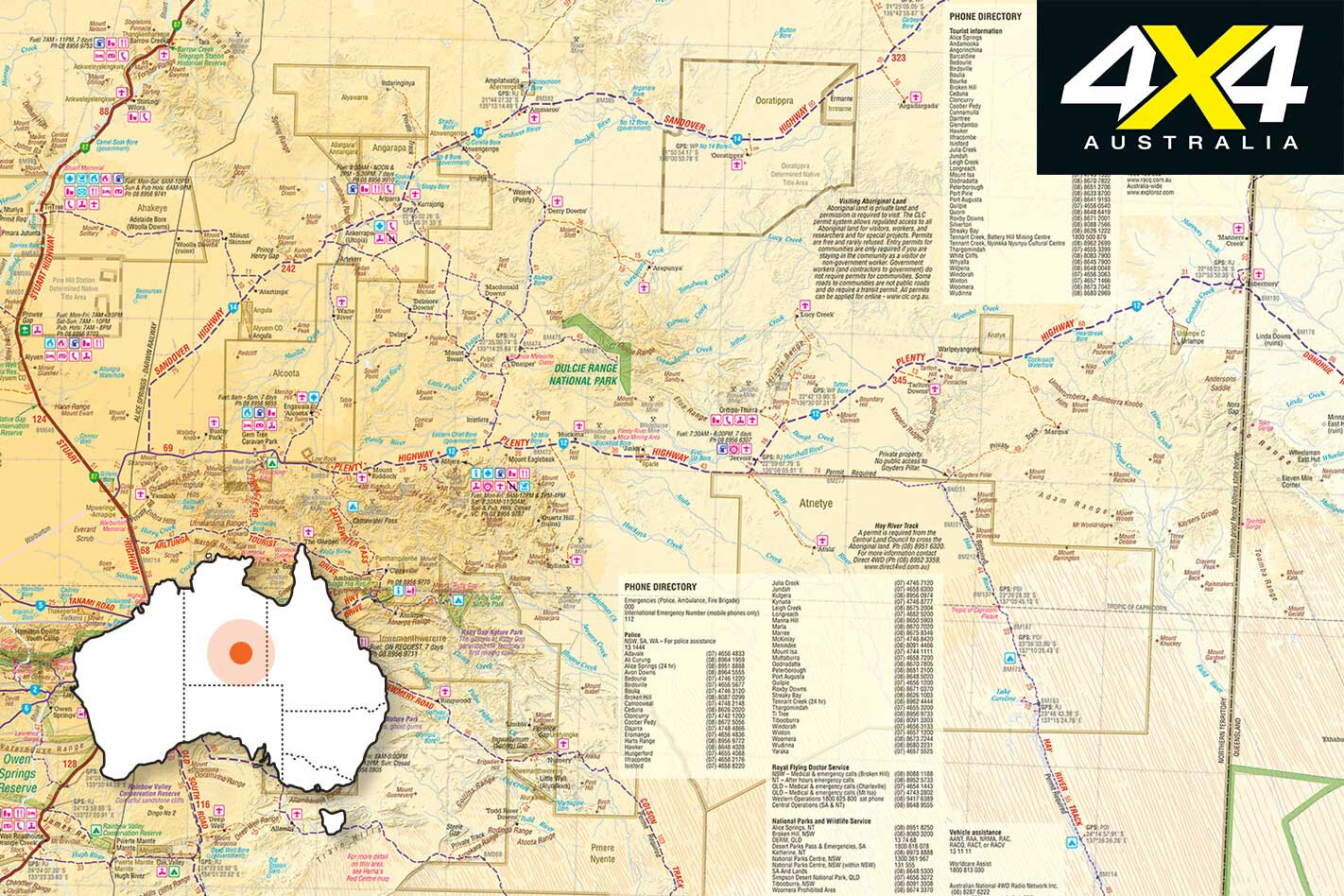
WHERE It is about 820km from Boulia to Alice Springs via the Plenty/Donoghue highways. The route is mainly improved gravel with patches of bulldust and corrugations. More and more of the road is being bituminised each year.
SUPPLIES Boulia: www.boulia.qld.gov.au/tourism Tobermorey Roadhouse: http://tobermorey-roadhouse.com.au Jervois Station roadhouse: phone: (08) 8956 6307 Batton Hill Camp/Hay River Tk: For permits and info, contact Jol Fleming’s Direct 4WD, phone: (08) 8952 3359; www.direct4wd.com.au Dulcie Range NP: http://traveloutbackaustralia.com/dulcie-ranges-national-park.html Mac & Rose Chambers CR: https://nt.gov.au/leisure/parks-reserves/find-a-park-to-visit/mac-rose-chalmers-conservation-reserve
CONTACTS Mt Swan HS & store: (08) 8956 9097 Atitjere Store (Harts Range): (08) 8956 9773 Harts Range Police: (08) 8956 9772 Binns Track: https://northernterritory.com/drive/binns-track Gemtree Bush Resort: (08) 8956 9855, or visit: www.gemtree.com.au Fossicking in Harts Range: https://fossicking.nt.gov.au/declared-fossicking-areas Alice Springs: www.discovercentralaustralia.com NT road conditions: 1800 246 199 Qld road conditions: 1300 130 595
BEST MAP Hema Great Desert Tracks Atlas and Guide.

